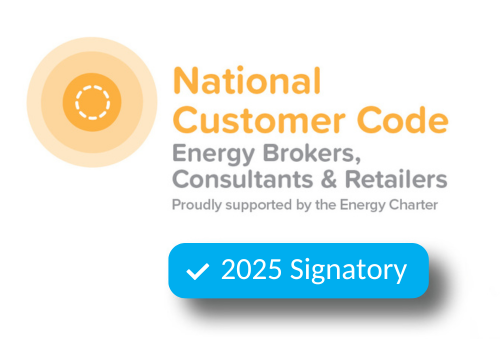A comparison of Global Sustainability Reporting Standards: ISSB, CSRD, SEC, and ASRS
As sustainability reporting becomes a fundamental part of corporate transparency, various regulatory bodies worldwide have introduced frameworks to standardize disclosures. Understanding the differences between these frameworks is essential for businesses operating across multiple jurisdictions.
This article compares four key sustainability reporting standards:
1. International Sustainability Standards Board (ISSB);
2. Corporate Sustainability Reporting Directive (CSRD) in the EU;
3. U.S. Securities and Exchange Commission (SEC) Climate Disclosure Rules;
4. Australian Sustainability Reporting Standards (ASRS).
We compare the different supporting standards on the following bases:
1. Scope and Applicability – Defines who must comply with the standards, whether it’s global, regional, or sector-specific. Businesses need to know if a regulation applies to them.
2. Materiality Approach – Determines whether the reporting focuses only on financial impacts (single materiality) or includes wider societal and environmental impacts (double materiality). This distinction affects the depth and breadth of disclosures required.
3. Reporting Requirements – Outlines what must be reported, such as governance, risk management, and ESG (Environmental, Social, and Governance) metrics. This ensures businesses meet investor and regulatory expectations.
4. Greenhouse Gas Emissions Reporting – Specifies whether companies must disclose Scope 1, 2, and 3 emissions, which are critical for assessing their climate impact and aligning with carbon reduction targets.
5. Assurance Requirements – Indicates whether third-party verification or audits of sustainability reports are required. This helps ensure credibility, accuracy, and investor confidence.
6. Implementation Timeline – Shows when businesses need to start complying with the standards. Understanding deadlines helps with preparation, data collection, and strategic planning.
7. Alignment with International Agreements – Highlights how the reporting standards align with global climate commitments, such as the Paris Agreement. This is key for companies setting sustainability goals and demonstrating long-term environmental responsibility.
| Criteria | ISSB | CSRD | SEC | ASRS |
| 1. Scope and Applicability | ||||
| Scope | Global baseline for sustainability disclosures | Mandatory for large companies & listed SMEs | Climate-related disclosure for publicly traded companies | Sustainability reporting standard for Australian entities |
| Jurisdiction | Worldwide | European Union | United States | Australia |
| Key Focus | Harmonization of reporting for investors and stakeholders | Comprehensive ESG reporting, supporting EU sustainability goals | Consistent data on climate risks for investors | Focuses on sustainability disclosures relevant to Australian regulations and business environment |
| 2. Materiality Approach | ||||
| Materiality Perspective | Single materiality | Double materiality | Financial materiality | Double materiality (considering both financial and sustainability impacts) |
| Key Considerations | Focuses on financial impacts of sustainability issues on the company | Considers financial impacts and the company’s impact on society and environment | Similar to ISSB, focusing on investor-relevant information | Aligns with Australian regulatory and investor expectations, considering both financial and environmental/social impacts |
| 3. Reporting Requirements | ||||
| Governance & Strategy | Required | Required | Required | Required |
| Risk Management | Required | Required | Required | Required |
| Metrics & Targets | Required for significant sustainability risks | Detailed ESG topics, including transition plans to a sustainable economy | Focused on climate-related risks and GHG emissions disclosure | Aligns with Australian sustainability priorities and regulatory frameworks |
| 4. Greenhouse Gas Emissions Reporting | ||||
| Scope 1 & 2 Required? | Yes | Yes | Yes | Yes |
| Scope 3 Required? | If material | Yes | Only if material or part of the company’s GHG target | Yes, where material or mandated by Australian sustainability reporting requirements |
| 5. Assurance Requirements | ||||
| Assurance Requirement | Encouraged but not mandatory | Limited assurance required | Mandates attestation for Scope 1 & 2 emissions | Limited assurance required initially, with potential future requirements for reasonable assurance |
| Additional Notes | Voluntary for improved credibility | Moving towards reasonable assurance over time | Applies to large accelerated filers | Expected to evolve in line with Australian financial and sustainability regulations |
| 6. Implementation Timeline | ||||
| Effective Date | January 1, 2024 | January 1, 2024 | March 6, 2024 | Expected phased implementation starting from 2024/2025 financial year |
| Implementation Stages | Single effective date for all entities | Phased based on company size and type | Compliance dates staggered by filer status | Phased approach based on company size and industry sector |
| 7. Alignment with International Agreements | ||||
| Paris Agreement Alignment? | Required disclosure on climate-related targets | Mandatory disclosure of alignment | Not explicitly required | Expected alignment with Australian climate commitments, including the Paris Agreement |
| Additional Requirements | Companies must disclose comparability with international commitments | Companies must outline plans for climate neutrality by 2050 | Focuses on material climate-related risks and opportunities | Australian entities expected to disclose how their sustainability targets align with national and international commitments |
Conclusion
Navigating sustainability reporting standards can be particularly complex for Australian businesses, given the interplay between domestic regulations and international expectations. The ISSB, CSRD, SEC, and ASRS frameworks all aim to enhance transparency and investor confidence, but they differ in their scope, materiality principles, and compliance requirements. While European businesses must meet the CSRD’s extensive ESG disclosure mandates, and U.S. companies focus on financial materiality under SEC rules, Australian firms will need to align with ASRS.
For Australian businesses, ASRS will play a crucial role in aligning sustainability reporting with international best practices while addressing local regulatory expectations. Meanwhile, the ISSB serves as a global baseline, promoting consistent and comparable sustainability disclosures across jurisdictions.
As sustainability compliance requirements evolve, Australian companies must proactively prepare for mandatory sustainability reporting, carbon reduction targets, and assurance obligations. By integrating sustainability into their core business strategy, organizations can enhance resilience, investor confidence, and regulatory compliance while positioning themselves as leaders in the transition to a low-carbon economy.
How Leading Edge Energy Can Help
At Leading Edge Energy, we specialize in helping commercial and industrial energy users navigate the complexities of energy procurement and emissions reduction. Our services include:
- Comparing energy retailers to find the best contracts for a low-carbon energy supply.
- Advising on renewable energy options, such as PPAs and GreenPower.
- Providing expert guidance on emissions reporting and regulatory compliance.
- Conducting energy audits to identify cost-saving and sustainability opportunities.
—
Leading Edge Energy can help you secure stable, competitive rates so energy price spikes don’t affect your bottom line.
Let’s chat. Call us at 1300-852-770 or email us at info@leadingedgeenergy.com.au.
You may also sign up for an obligation-free consultation by responding to our form. Click the button below.
We source, analyse, compare and rank commercial, industrial and multi-site energy quotes. Obligation Free.
Chat with one of our experienced consultants today and get the insights your business needs to help manage the risks associated with volatile electricity and natural gas markets. Our energy procurement service is obligation-free and provides a time-saving way of securing lower energy rates from our panel of energy retailers.

Get advice from our Energy Management Consultants

James Iliffe
Managing Director
Get in Touch
Feel free to call or e-mail us. Or just fill in the form below and we’ll contact you for an obligation-free discussion.
Are you ready to save on business energy costs?
Get Started
Leading Edge Energy is proud to be a signatory of the National Customer Code for Energy Brokers, Consultants and Retailers.